Pacific Fire Honey
LifeSource Natural Foods | Posted on |
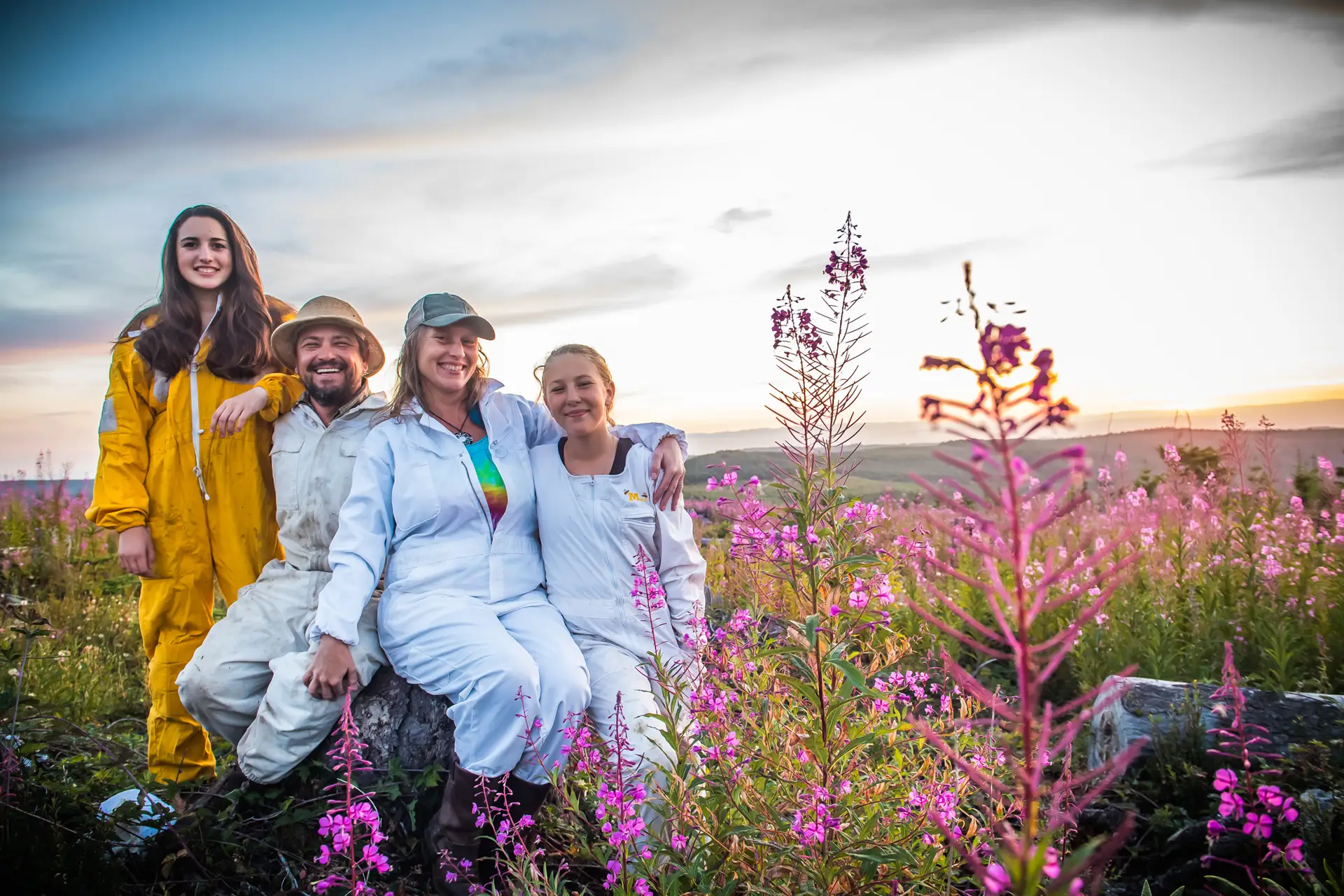

In mid-summer, my wife and I followed Leo Rumely of Pacific Honeybees, his wife Jenn, and their two daughters up a 3,500 ft. mountain just outside of their home in Mt. Angel, OR to take some photos of their fireweed honey operation and to learn a little more about their local honey production here in Oregon.
I didn’t know what I was getting myself into with this drive up the mountain but luckily my wife’s all wheel drive VW did amazingly well keeping up with Leo’s big work truck. On the way up the mountain, all we could see was dust from the dirt road, evergreen trees, a blue sky, and hopefully the tail lights of Leo’s truck so we could keep up and not miss a turn. When we got past two locked gates and all of the dust had cleared from the crest of the mountain, we had a panoramic view of all of the cities in the valley below, right at sunset. This was an exhilarating view that not many get to witness, but one Leo gets to take in every day during the honeymaking season. I turned up the stereo and hoped the rest of the evening could be as good as the sunset view at 3,500 ft., surrounded by the beautiful magenta fireweed plant that makes what is known as the “champagne of honey.”
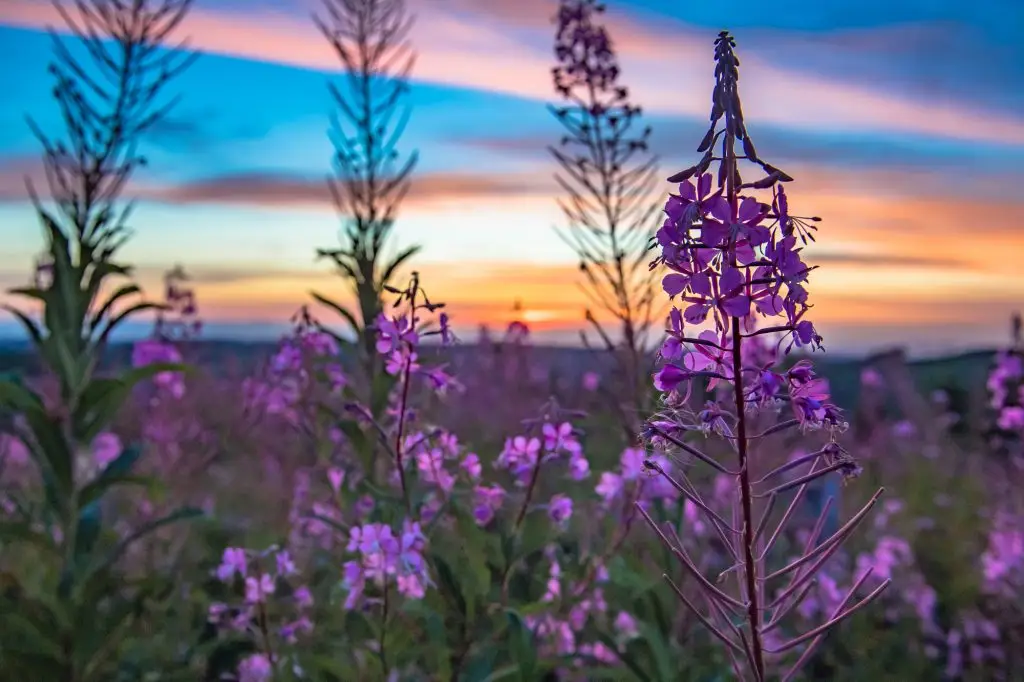
After sunset turned to dusk, Jenn brought out a fireweed tea that she had made that same day from the plants on this mountain.
Fireweed has a history going all the way back to Ivan XII of Russia. It is said that even Napoleon feared the Russians and their fireweed tea, with its healing and strengthening powers that Napoleon and his army didn’t have access to. At that time it is said that fireweed was more valuable than gold or fur.
After World Wars I and II, the fireweed plant grew rapidly over heavily bombed areas, bringing renewal and restoration to those burnt lands. Today it does the same in the mountains of Oregon and all over the Northwest. Fireweed seed can lay dormant for many years, awaiting the warmth of the sun to be germinated. Fireweed is one of the first plants to appear after a forest fire; it also rapidly covers areas that have been clearcut.
Jenn’s fireweed tea gave me the energy to stay up a bit later, and we all got out our camp chairs and watched the Perseid meteor shower. That was a night I will not soon forget.
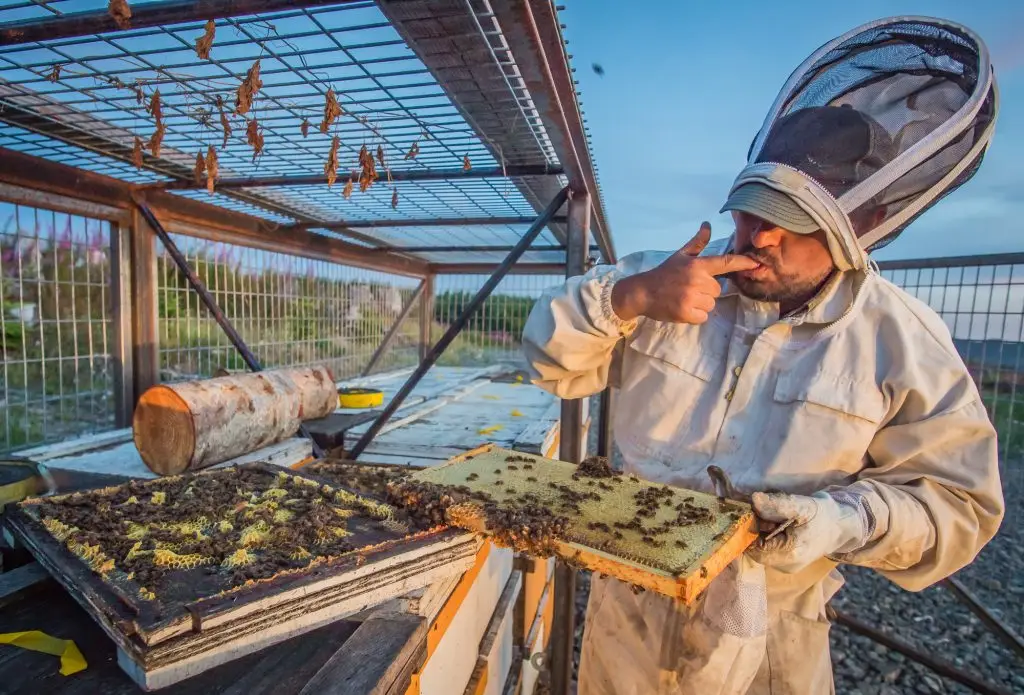
Buy Pacific Honeybee Honey
I first met Leo when I started beekeeping in my backyard. I have always been intrigued by bees and over the past decade have been paying attention to the importance of them. Without bees we would not have the ability to produce quality food. I realized that having a healthy bee hive is something that we can all do with not much cost. With the help of a neighbor who feels the same way, I decided to start my first colony.
The first step is the equipment, which I was luckily given for free from said neighbor. The next and most important step is acquiring a colony, in my case in the form of a nucleus. A nucleus is five frames of bees along with a queen. I found him Leo of Pacific Honeybees online and bought a nucleus from him.
Being new to the beekeeping world, I was a little worried about my investment. So the first time I ever had a question about what to do to keep my new colony happy and alive, I called Leo and he answered immediately. He gave me the info that I needed and then even came by my house at no cost to teach me how to keep mites from killing my colony. To him, my bees are kind of like his grandchildren, so he wanted my bees to do well just like he did his own bees.
That’s when I learned that he not only sold bee nuclei and did crop pollination but also sold honey. As a manager and buyer for LifeSource, who loves to promote local farms, I knew my next move. I needed to get his honey into our store.
After realizing that Pacific Honeybees is now LifeSource’s most local honey farm and the importance of local farms, I wanted to tell our customers more about Pacific Honeybees so I sat down with Leo and Jenn to get the whole story.
Jenn first started beekeeping in 2012 when her parents gave her a hive. Jenn’s grandfather Fritz had been a logger and beekeeper so it felt natural to her, but then she accidentally killed her first colony by not feeding them the right kind of sugar water. She had fed them raw sugar water (which is bad for the bees) instead of regular sugar water. As she explained this horrible day to me, I could tell it was one of those experiences you never forget.
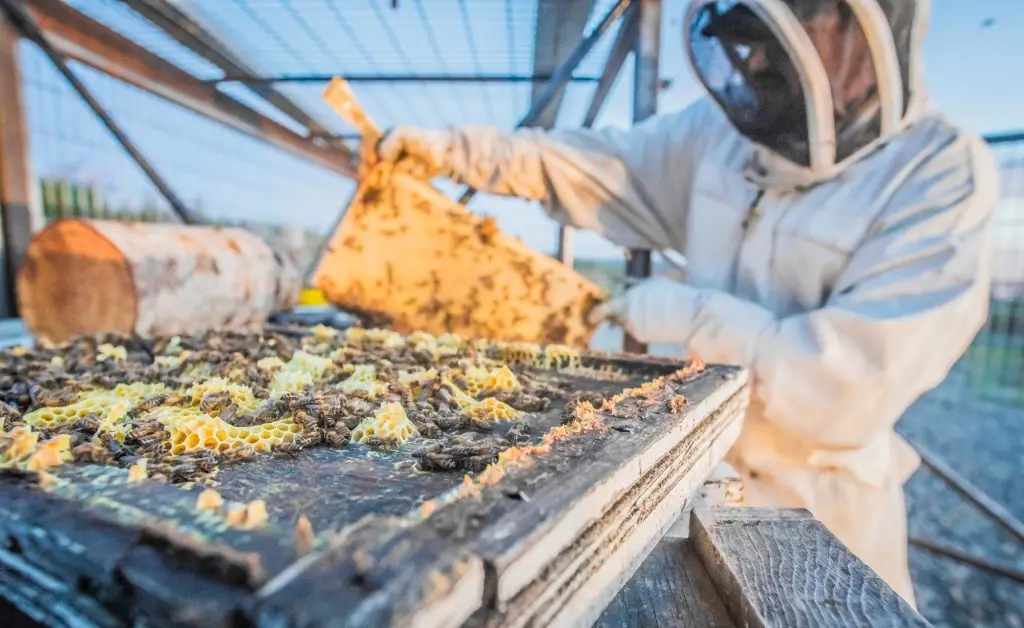
After this bad experience, Leo stepped in to take a bigger role. In a beekeeping magazine, Leo found a job that would last about two months per year using beehives to pollinate almond farms in California. After working for the city of Silverton for over 15 years, he had built up hundreds of hours of vacation pay, enough that he could take the beekeeping job and still keep his full-time job with the city of Silverton. He took the leap not knowing what would happen next, only knowing that this “whole bee thing” was something they believed in, something that was in Jenn’s family history.
While working for the company that did pollination of almond fields, Leo received frame of bees per hour of work. After his two months of work, Leo and Jenn stayed up late building bee boxes in their basement. The first year he came home with almost fifty hives. After four years he built up over 300 colonies of bees. Though they originally started this endeavor for pollination not for the honey, in time they had buckets of honey lining the stairs of their hallway and all over the kitchen. With all of this honey clutter, they decided they needed a better space to extract and store their honey and they converted their shed into their first honey house. Soon, their neighbors heard they were beekeepers, and Leo and Jenn often got a knock on their door from neighbors wanting to buy their honey. They started with an honor system honey stand in their shed. Then in late 2018 they found a location only 3 blocks from their home in Mt. Angel and started their retail location. With Mt. Angel’s German heritage, they obviously had to call it the Honey Haus.
Buy Pacific Honeybee Honey
Leo eventually had over 1,400 hives, but he quickly found that having so many hives made the work unenjoyable, so he scaled back down. By this summer, Leo had around 700 hives that could be split into over 24 locations at any given time.
After beekeeping for some years, Leo and Jenn were visiting Leo’s grandmother Trudy, who filled them in on Leo’s family history with beekeeping. Unbeknownst to Leo, his great-grandparents Josephine and Henry had been beekeepers, and Leo’s great-great-grandparents Henrietta and Herman had been beekeepers as well. They had kept hives in the same places that Leo keeps his bees to this day.
Now they make more than 12 varieties of the best 100% raw honey that I have ever tasted, but Leo and Jenn say they don’t have any plans to grow too big. They don’t want to “sell out” like many other big honey productions have. They’d rather put the best 100% raw honey on the tables of Oregonians. They believe in putting a beehive in the backyards of as many people as they can so that together we can continue to feed everybody.
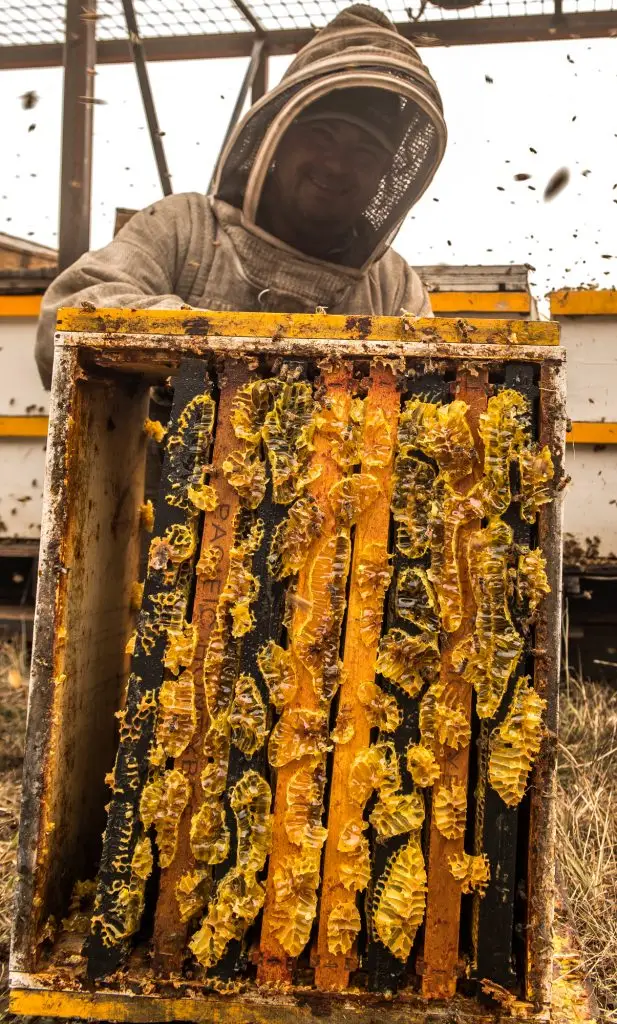
As a new beekeeper myself, I’ve been stung a few times since starting my hive, so I asked Leo one last question: “How many times a day do you get stung?”
“On an average day it’s really only 5 to 15 times,” he replied. “On a bad day it can get up to 50.” I cringed, laughed, and thanked him and Jenn for what they do.
That’s where I had planned to end this story, but on Labor Day, everything changed for Leo and Jenn. The family had planned to go camping the weekend after Labor Day, and on the following Monday start to harvest their fireweed honey. Neither one of these late-summer family outings would happen.
Buy Pacific Honeybee Honey
The wildfires where Leo’s bees are located started on Tuesday, September 8th. Leo quickly realized he had likely lost up to 288 colonies of bees, but because of the fires Leo had no way of going up the mountain to see if any of them had survived. On September 13, with the air quality still so bad that he was stuck inside, having a glass of wine and playing Monopoly with his 13-year-old daughter, when he got a phone call. It was Troy Perrish, a firefighter with the Department of Forestry, who also happens to be a hobby bee-keeper. It was a conversation Leo won’t soon forget.
“I’m in charge of the Beachie Creek fire,” Troy said, “and I am standing in front of a cage full of bees. There’s a sign attached to the cage that has your name and phone number on it. Are these your bees?”
“Yeah!” Leo replied. “Are you serious? No way!”
“Yeah dude… You got lucky.”
“I’ve got eleven more of those out there,” Leo said, “and one is only about a quarter mile away.”
Troy took off up the hill in his truck to find the next closest set of hives. They were also spared, so Troy asked Leo if he wanted to come get them.
“Hell yeah!” Leo replied. He got into his old 1990 rollback tow truck that he uses to move the large bear-protective cages and took off to save any bees that he could.
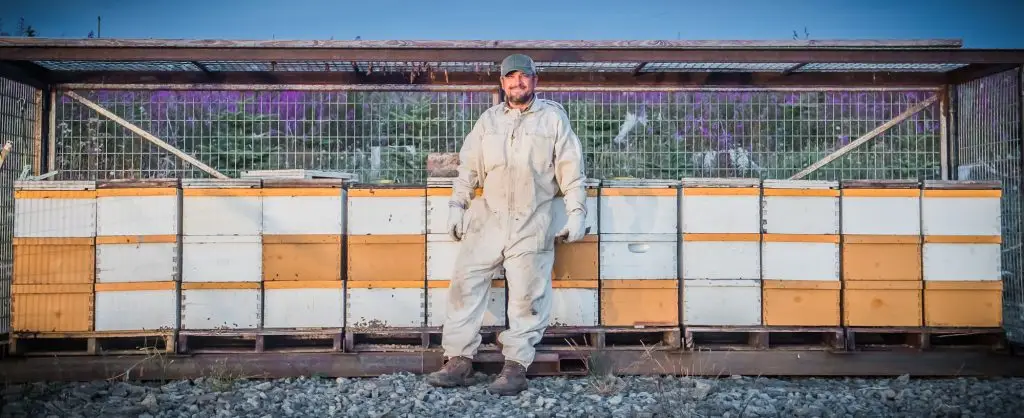
Fires still burned on both sides of the gravel logging road that Leo traveled. Troy escorted Leo through the flames and helped him get the two cages of bees off of the burning mountain. Leo gave Troy a map to his other locations, in hopes that more might still be alive. Troy was excited: when you see so much destruction as a firefighter, it’s very rewarding to bring some life back from the inferno.
Troy called Leo the next day, and told him that he and his team had found two more of the cages that had survived, each full of twenty-four hives, but that the other ten cages had completely burned.
Of the four cages that had survived, the fire had come within just a couple of feet of the hives, then jumped over and landed within just a short distance on the other side of the hives. Leo has no idea why this happened but said prayers, luck, and maybe the bees themselves helped.
As Leo was bringing those last two cages of live bees off of the mountain, which took about two hours each, fire crews putting out the smoldering ground stopped for a second to cheer him on. For a fire crew, seeing anything alive coming from such devastation brings them gratification for their hard work. It was certainly a pivotal moment in Leo’s life.
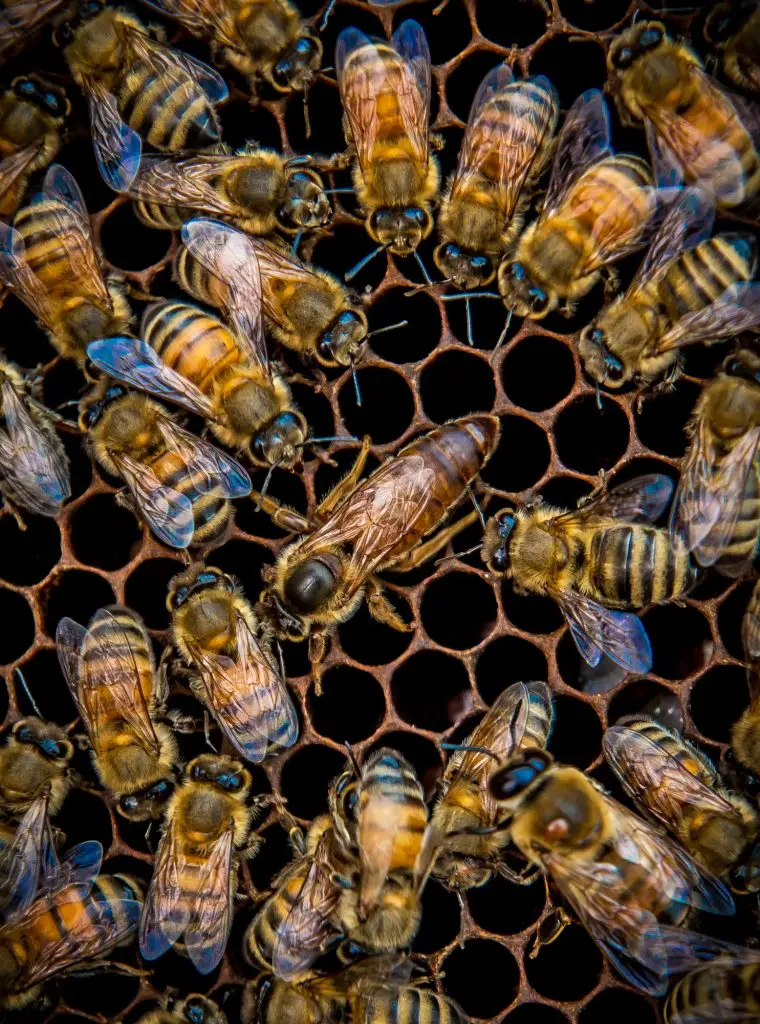
To replace 240 hives – around 7 million bees – is no small task, It will take a lot of time and money and although his equipment is covered by insurance, his time and loss of income isn’t. Still, Leo is excited about it. His favorite part of beekeeping has always been building bee colonies, whether it’s for him or for a new beekeeper like myself.
The fireweed plant from which fireweed honey is made is activated by fire, hence the name. Seeds lay dormant for years until there is a fire. Although Leo lost millions of bees because of these fires, the fires will create more of the fireweed that produces this amazing honey. Now Leo will have more areas to put more bee hives, to produce an even larger amount of this amazing honey in the future.
Buy Pacific Honeybee Honey
In mid-summer, my wife and I followed Leo Rumely of Pacific Honeybees, his wife Jenn, and their two daughters up a 3,500 ft. mountain just outside of their home in Mt. Angel, OR to take some photos of their fireweed honey operation and to learn a little more about their local honey production here in Oregon.
I didn’t know what I was getting myself into with this drive up the mountain but luckily my wife’s all wheel drive VW did amazingly well keeping up with Leo’s big work truck. On the way up the mountain, all we could see was dust from the dirt road, evergreen trees, a blue sky, and hopefully the tail lights of Leo’s truck so we could keep up and not miss a turn. When we got past two locked gates and all of the dust had cleared from the crest of the mountain, we had a panoramic view of all of the cities in the valley below, right at sunset. This was an exhilarating view that not many get to witness, but one Leo gets to take in every day during the honeymaking season. I turned up the stereo and hoped the rest of the evening could be as good as the sunset view at 3,500 ft., surrounded by the beautiful magenta fireweed plant that makes what is known as the “champagne of honey.”
After sunset turned to dusk, Jenn brought out a fireweed tea that she had made that same day from the plants on this mountain.
Fireweed has a history going all the way back to Ivan XII of Russia. It is said that even Napoleon feared the Russians and their fireweed tea, with its healing and strengthening powers that Napoleon and his army didn’t have access to. At that time it is said that fireweed was more valuable than gold or fur.
After World Wars I and II, the fireweed plant grew rapidly over heavily bombed areas, bringing renewal and restoration to those burnt lands. Today it does the same in the mountains of Oregon and all over the Northwest. Fireweed seed can lay dormant for many years, awaiting the warmth of the sun to be germinated. Fireweed is one of the first plants to appear after a forest fire; it also rapidly covers areas that have been clearcut.
Jenn’s fireweed tea gave me the energy to stay up a bit later, and we all got out our camp chairs and watched the Perseid meteor shower. That was a night I will not soon forget.
I first met Leo when I started beekeeping in my backyard. I have always been intrigued by bees and over the past decade have been paying attention to the importance of them. Without bees we would not have the ability to produce quality food. I realized that having a healthy bee hive is something that we can all do with not much cost. With the help of a neighbor who feels the same way, I decided to start my first colony.
The first step is the equipment, which I was luckily given for free from said neighbor. The next and most important step is acquiring a colony, in my case in the form of a nucleus. A nucleus is five frames of bees along with a queen. I found him Leo of Pacific Honeybees online and bought a nucleus from him.
Being new to the beekeeping world, I was a little worried about my investment. So the first time I ever had a question about what to do to keep my new colony happy and alive, I called Leo and he answered immediately. He gave me the info that I needed and then even came by my house at no cost to teach me how to keep mites from killing my colony. To him, my bees are kind of like his grandchildren, so he wanted my bees to do well just like he did his own bees.
That’s when I learned that he not only sold bee nuclei and did crop pollination but also sold honey. As a manager and buyer for LifeSource, who loves to promote local farms, I knew my next move. I needed to get his honey into our store.
After realizing that Pacific Honeybees is now LifeSource’s most local honey farm and the importance of local farms, I wanted to tell our customers more about Pacific Honeybees so I sat down with Leo and Jenn to get the whole story.
Jenn first started beekeeping in 2012 when her parents gave her a hive. Jenn’s grandfather Fritz had been a logger and beekeeper so it felt natural to her, but then she accidentally killed her first colony by not feeding them the right kind of sugar water. She had fed them raw sugar water (which is bad for the bees) instead of regular sugar water. As she explained this horrible day to me, I could tell it was one of those experiences you never forget.
After this bad experience, Leo stepped in to take a bigger role. In a beekeeping magazine, Leo found a job that would last about two months per year using beehives to pollinate almond farms in California. After working for the city of Silverton for over 15 years, he had built up hundreds of hours of vacation pay, enough that he could take the beekeeping job and still keep his full-time job with the city of Silverton. He took the leap not knowing what would happen next, only knowing that this “whole bee thing” was something they believed in, something that was in Jenn’s family history.
While working for the company that did pollination of almond fields, Leo received frame of bees per hour of work. After his two months of work, Leo and Jenn stayed up late building bee boxes in their basement. The first year he came home with almost fifty hives. After four years he built up over 300 colonies of bees. Though they originally started this endeavor for pollination not for the honey, in time they had buckets of honey lining the stairs of their hallway and all over the kitchen. With all of this honey clutter, they decided they needed a better space to extract and store their honey and they converted their shed into their first honey house. Soon, their neighbors heard they were beekeepers, and Leo and Jenn often got a knock on their door from neighbors wanting to buy their honey. They started with an honor system honey stand in their shed. Then in late 2018 they found a location only 3 blocks from their home in Mt. Angel and started their retail location. With Mt. Angel’s German heritage, they obviously had to call it the Honey Haus.
Leo eventually had over 1,400 hives, but he quickly found that having so many hives made the work unenjoyable, so he scaled back down. By this summer, Leo had around 700 hives that could be split into over 24 locations at any given time.
After beekeeping for some years, Leo and Jenn were visiting Leo’s grandmother Trudy, who filled them in on Leo’s family history with beekeeping. Unbeknownst to Leo, his great-grandparents Josephine and Henry had been beekeepers, and Leo’s great-great-grandparents Henrietta and Herman had been beekeepers as well. They had kept hives in the same places that Leo keeps his bees to this day.
Now they make more than 12 varieties of the best 100% raw honey that I have ever tasted, but Leo and Jenn say they don’t have any plans to grow too big. They don’t want to “sell out” like many other big honey productions have. They’d rather put the best 100% raw honey on the tables of Oregonians. They believe in putting a beehive in the backyards of as many people as they can so that together we can continue to feed everybody.
As a new beekeeper myself, I’ve been stung a few times since starting my hive, so I asked Leo one last question: “How many times a day do you get stung?”
“On an average day it’s really only 5 to 15 times,” he replied. “On a bad day it can get up to 50.” I cringed, laughed, and thanked him and Jenn for what they do.
That’s where I had planned to end this story, but on Labor Day, everything changed for Leo and Jenn. The family had planned to go camping the weekend after Labor Day, and on the following Monday start to harvest their fireweed honey. Neither one of these late-summer family outings would happen.
The wildfires where Leo’s bees are located started on Tuesday, September 8th. Leo quickly realized he had likely lost up to 288 colonies of bees, but because of the fires Leo had no way of going up the mountain to see if any of them had survived. On September 13, with the air quality still so bad that he was stuck inside, having a glass of wine and playing Monopoly with his 13-year-old daughter, when he got a phone call. It was Troy Perrish, a firefighter with the Department of Forestry, who also happens to be a hobby bee-keeper. It was a conversation Leo won’t soon forget.
“I’m in charge of the Beachie Creek fire,” Troy said, “and I am standing in front of a cage full of bees. There’s a sign attached to the cage that has your name and phone number on it. Are these your bees?”
“Yeah!” Leo replied. “Are you serious? No way!”
“Yeah dude… You got lucky.”
“I’ve got eleven more of those out there,” Leo said, “and one is only about a quarter mile away.”
Troy took off up the hill in his truck to find the next closest set of hives. They were also spared, so Troy asked Leo if he wanted to come get them.
“Hell yeah!” Leo replied. He got into his old 1990 rollback tow truck that he uses to move the large bear-protective cages and took off to save any bees that he could.
Fires still burned on both sides of the gravel logging road that Leo traveled. Troy escorted Leo through the flames and helped him get the two cages of bees off of the burning mountain. Leo gave Troy a map to his other locations, in hopes that more might still be alive. Troy was excited: when you see so much destruction as a firefighter, it’s very rewarding to bring some life back from the inferno.
Troy called Leo the next day, and told him that he and his team had found two more of the cages that had survived, each full of twenty-four hives, but that the other ten cages had completely burned.
Of the four cages that had survived, the fire had come within just a couple of feet of the hives, then jumped over and landed within just a short distance on the other side of the hives. Leo has no idea why this happened but said prayers, luck, and maybe the bees themselves helped.
As Leo was bringing those last two cages of live bees off of the mountain, which took about two hours each, fire crews putting out the smoldering ground stopped for a second to cheer him on. For a fire crew, seeing anything alive coming from such devastation brings them gratification for their hard work. It was certainly a pivotal moment in Leo’s life.
To replace 240 hives – around 7 million bees – is no small task, It will take a lot of time and money and although his equipment is covered by insurance, his time and loss of income isn’t. Still, Leo is excited about it. His favorite part of beekeeping has always been building bee colonies, whether it’s for him or for a new beekeeper like myself.
The fireweed plant from which fireweed honey is made is activated by fire, hence the name. Seeds lay dormant for years until there is a fire. Although Leo lost millions of bees because of these fires, the fires will create more of the fireweed that produces this amazing honey. Now Leo will have more areas to put more bee hives, to produce an even larger amount of this amazing honey in the future.


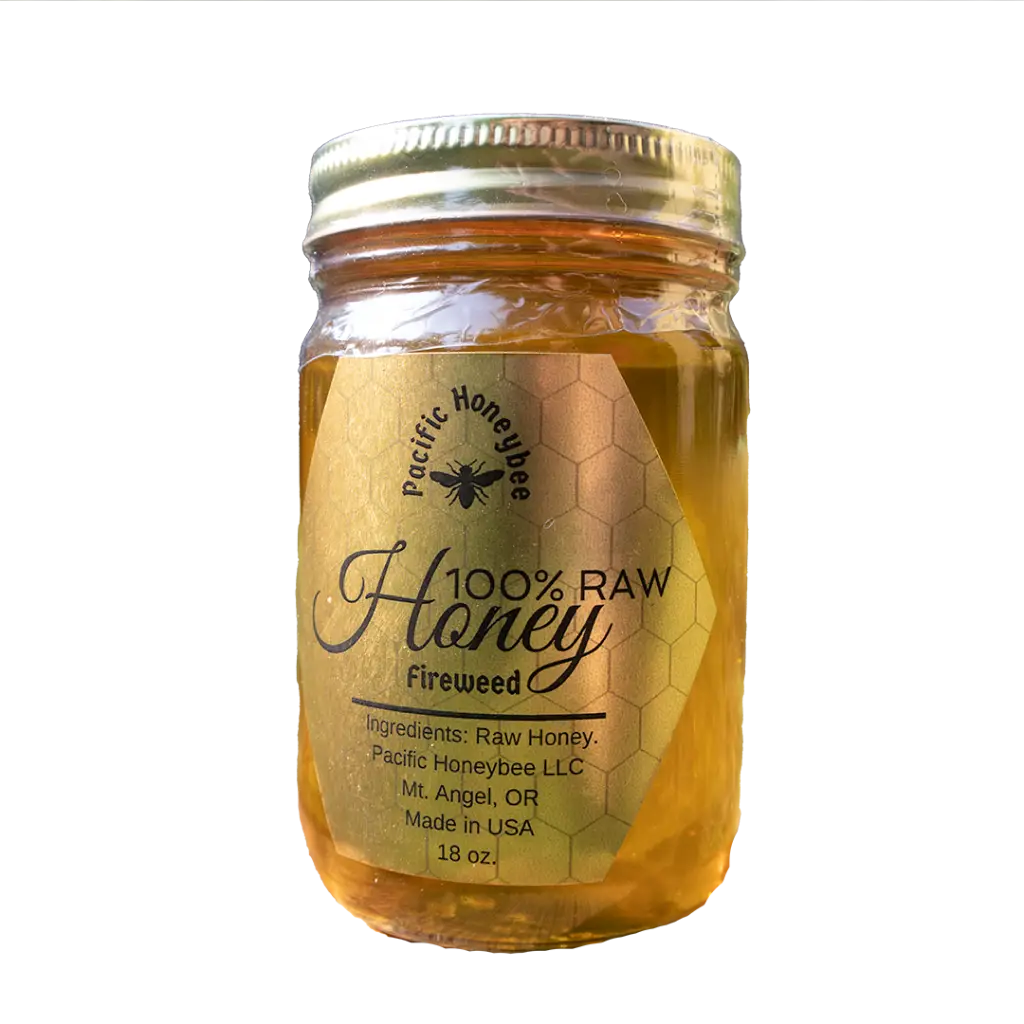


Leave a Reply